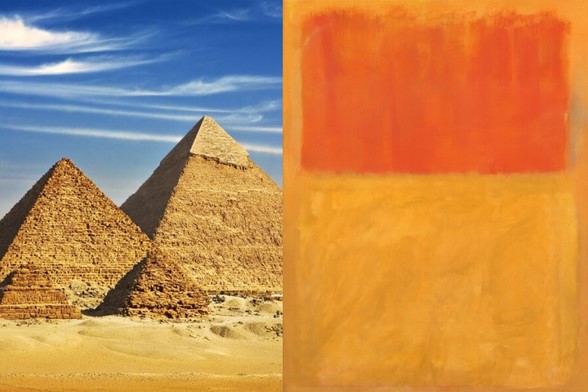Jiei Yamasato Year 12
We’re Small
There is this common existential dread I think a lot of us feel from time to time. Will I have any real effect on the world? Looking up the 140 m Jet d’Eau, gazing at the 1400 m tall Salève, or sitting at the bank of the 14000 m wide Lake Geneva, it’s easy for us to feel small and puny compared to the larger world.
However, while our physical bodies are limited in size, we are capable of making things that are perhaps a bit larger. Let us not fear bigness but understand it so that we can use it to our advantage.
Like we’re Ancient Egyptians
One great example of how humans have used size is the Great Pyramid of Giza. Built as the tomb for pharaoh Khufu, this pile of 2.3 million bricks stood as the tallest man made structure for more than 4000 years. What a monument! And the Great Pyramid of Giza isn’t the only one either. There are loads more similar pyramids all around the area. How did they do it? I’m not talking about the logistics either; how did they bring themselves to work on such an ambitious project?
Perhaps the answer to that question is apparent to some: slavery. But in reality, recent studies show that it is likely that the builders of the pyramid were all paid. The true psychological driving force behind the construction of these pyramids may be monumentality. Each of us individually may have infinitesimally small effects on the world, but through collaboration, we can build something great, something that lasts into the future, something that has an impact on the world. Largeness often can almost cast a sort of mystical spell on us, which puts us in complete awe.
Meet the Abstract Expressionists
Being one of if not the most controversial movement in art history, it is to absolutely no surprise that the abstract expressionists still make people question the true qualifications for whether something can be called art or not. Centered around New York, this group of artists were famous for their mastication of preconceived notions. Whether it was Mark Rothko’s solid puddles of colors, David Smith’s metal towers of cuboids, or Jackson Pollock’s action painting, all abstract expressionists had their individual ideas which they wanted to express.
Besides their complex ideological similarity, there’s another much more obvious trait which unites the group. That trait, as you might’ve guessed, is the size of their artworks. Very rarely does an abstract expressionist painting measure less than 6 feet on both height and width. What this allows for, is to envelop the observer into the painting. The artist almost surrounds its audience with their work to show off their novel idea. The size of their work allows people to immerse into what the work represents.
In the LGB Community
Did you know that there is something in our campus which meticulously uses size in the way I have been describing to subconsciously control our perception of the school? If you noticed, great job, it’s our Greek Theater! Just like the Egyptian pyramids, the Greek Theater was built by not only construction workers but also students and teachers, and since its reveal in 1954 the Greek Theater has remained largely undamaged for almost 70 years now. Additionally, its big-jagged-upside-down-pudding shape allows for visitors of the Greek Theater to stand at the center of the stage and surround themselves in the structure.
But what exactly is this idea which the Greek Theater is trying to convey? I believe the message of the Greek Theater which the school has been passing down for decades is the importance of union for peace. By coming together as a community, we have managed to build not only a monumental structure, but also a peace, which has and will likely last for many many decades or even centuries to come as long as we stick together. Hence we continue to hold whole school assemblies in the Greek Theater – working together to achieve something bigger.
We all have an inherent fear of entities larger than us. But by understanding great sizes, we are able to take hold of the biggest advantage.
Art History Club is held every Tuesday from 12:40 to 13:25 in SA207. For more information and updates, check out the Instagram account @lgb.arthistoryclub or contact [jiei.yamasato@learning.ecolint.ch].



